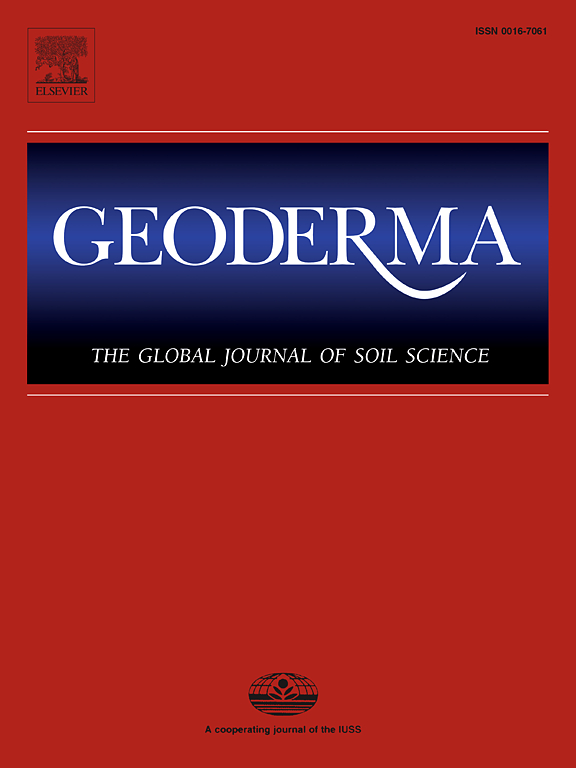Plant litter decomposition is regulated by its phosphorus content in the short term and soil enzymes in the long term
IF 5.6
1区 农林科学
Q1 SOIL SCIENCE
引用次数: 0
Abstract
Plant litter decomposition plays a vital role in soil carbon (C) cycling and nutrient release, significantly influencing agricultural resource utilization and soil fertility management. Litter quality—defined by its C, nitrogen (N), and phosphorus (P) contents, as well as C:N:P stoichiometry—is a key factor regulating its decomposition. However, the influence of litter C:P ratios on plant litter decomposition, particularly in relation to changes in soil C:N:P stoichiometry, microbial biomass, and extracellular enzyme activities, remains unclear, especially in agroecosystems. In this study, the effects of litter C:P ratios on its decomposition were investigated using 13C-labeled plant litter with naturally occurring gradients of C:P ratios (ranging from 377 to 1,288) in an 84-day incubation experiment. After 84 days, cumulative 13CO2 emissions derived from litter accounted for approximately 50 % of total CO2 emissions. Litter with higher P content increased 13CO2 emissions, whereas higher litter C:P ratios suppressed emissions, indicating that litter with lower C:P ratios decomposed more rapidly in the short-term (14 days). In contrast, elevated soil exoenzymatic C:P and N:P ratios stimulated 13CO2 emissions during long-term decomposition (84 days). These findings suggest that litter P content primarily regulates short-term decomposition, while soil enzyme activity plays a key role in long-term decomposition. Overall, this study highlights the pivotal role of P limitation in litter decomposition, particularly in the early stages, and underscores the potential benefits of P fertilization in enhancing decomposition rates, thereby improving resource efficiency and soil fertility in agroecosystems.

求助全文
约1分钟内获得全文
求助全文
来源期刊

Geoderma
农林科学-土壤科学
CiteScore
11.80
自引率
6.60%
发文量
597
审稿时长
58 days
期刊介绍:
Geoderma - the global journal of soil science - welcomes authors, readers and soil research from all parts of the world, encourages worldwide soil studies, and embraces all aspects of soil science and its associated pedagogy. The journal particularly welcomes interdisciplinary work focusing on dynamic soil processes and functions across space and time.
 求助内容:
求助内容: 应助结果提醒方式:
应助结果提醒方式:


